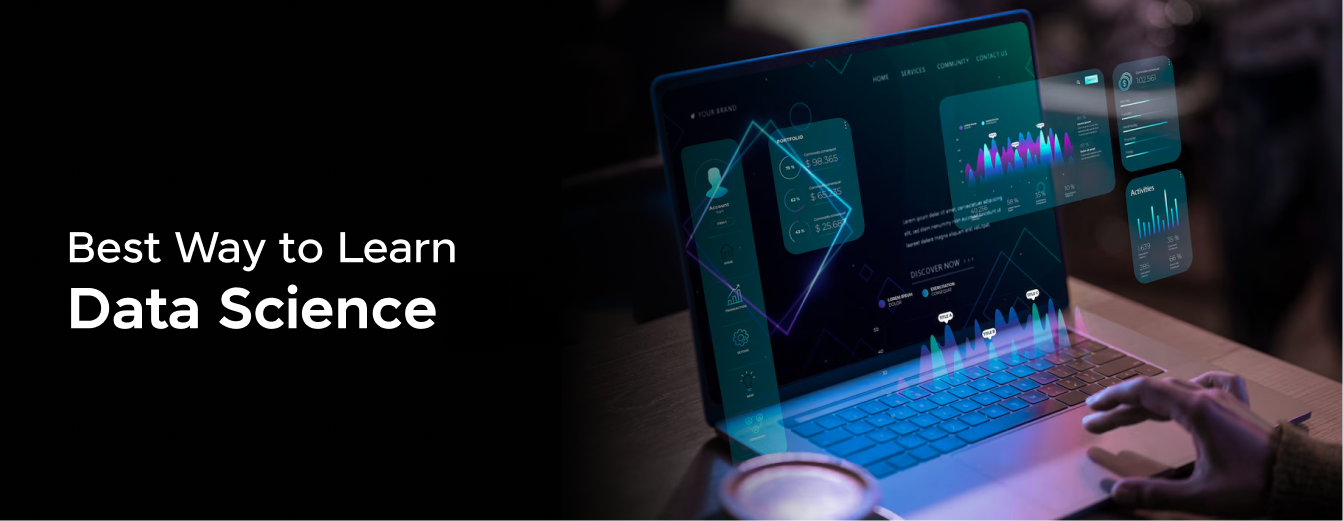
Are you confused on your journey, while looking for the best way to learn data science? Worry not! You’re in the right place.
In this blog, we will see what are the ways one can learn data science, the prerequisites for learning, and the skills and experience they gain along the way.
After this blog, you will get a clear picture of each way and you can choose either one of the ways described or you can construct your own way of learning data science. Without wasting any more time, let’s start!
Table of contents
- What is Data Science?
- Pre-requisites
- Steps to Learn Data Science
- Best Way To Learn Data Science
- Online Bootcamps and Courses
- Self Study
- Join Data Science Communities
- Participate in Hackathons
- Do Internships
- Wrap Up
- FAQs
What is Data Science?
By the name itself, we can say that it is a science about data. Data science is the study of data to extract meaningful information and insights. Data science is used to provide a data-driven solution to real-world problems. It includes maths, statistics, machine learning(ML) and artificial intelligence(AI).
Pre-requisites
Before exploring the skills that a data scientist requires, we will look into the prerequisites you should meet in order to start with the skills.
- Curiosity & Problem-solving skills: Data scientists naturally have curiosity and a passion for solving complex problems. If you enjoy uncovering hidden insights from the data, then it is a great fit for you.
- Analytical skills: Data science is all about analyzing the data for insights. If you are good at thinking critically, breaking down problems and making sense of numbers this career will suit you the best.
- Programming: Familiarity with programming languages such as Python, SQL or R is essential for data science roles. If you don’t have the knowledge, it is totally alright. It is something you can learn and practice.
- Communication Skills: Data scientists don’t just analyze data, they need to share their findings with non-technical stakeholders. If you are a person who loves to tell stories, you will be able to clearly communicate your findings.
If you didn’t meet all or any of the prerequisites, worry not. You will learn along the way, but keep in mind that these are really important for you to get into data science.
Steps to Learn Data Science
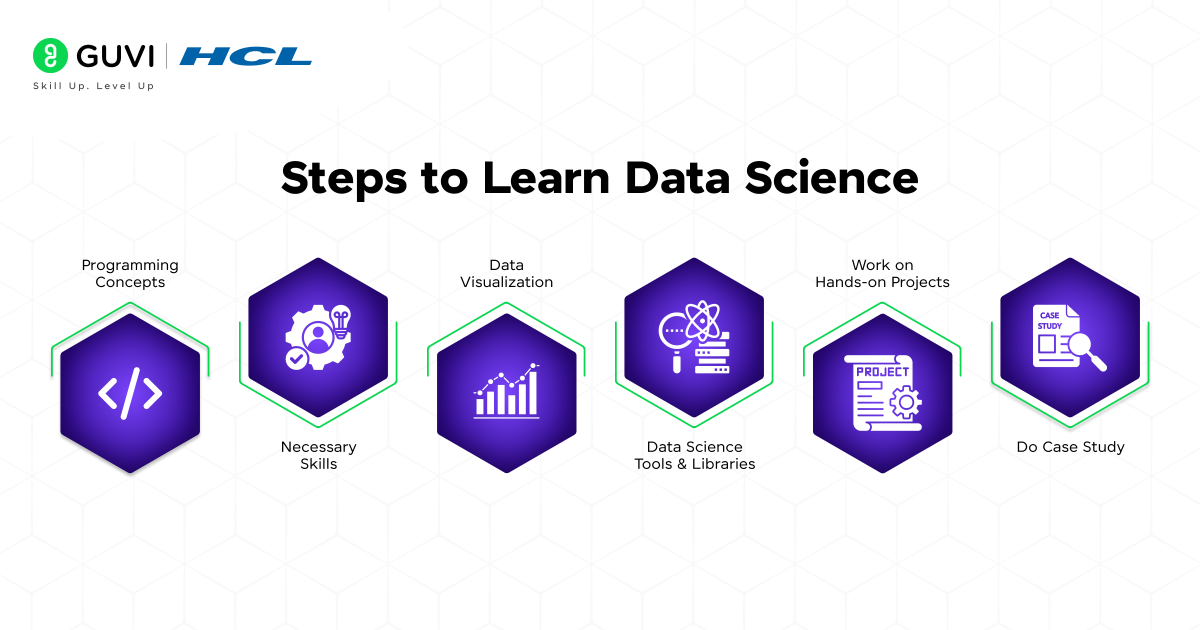
Now that you know the prerequisites required for data science. These steps are constructed in a way that will help both beginners and professionals who want to switch their careers. Let’s dive into the steps to learn data science from scratch.
- Programming Concepts
As a first step, you should have a strong understanding of fundamental programming concepts such as variables, functions, classes, objects and other object-oriented programming principles.
There are various object-oriented programming languages, but for data science related tasks you have to choose a programming language that is easy to understand, integrate and implement artificial intelligence and machine learning algorithms. The best programming languages for data science are Python, Scala and R. These languages are not only easy to learn but also helpful in handling, manipulating and analyzing the data.
- Necessary Skills
Once you gained a strong foundation in programming concepts, you can now focus on learning the necessary skills required for a data scientist. These skills include mathematics, statistics, machine learning, big data and artificial intelligence.
Mathematics and Statistics
Mathematics and Statistics are the fundamentals of data science, you must have a strong understanding of these subjects. These are essential skills for data collection, cleaning and analysis. Focus on the concepts like linear algebra, calculus and probability theories in mathematics. In statistics, focus on hypothesis testing, regression analysis and data distribution concepts.
Machine learning and Artificial Intelligence
The next skill is Machine Learning(ML) and Artificial Intelligence(AI). Machine Learning and Artificial intelligence algorithms play a critical role in data science in predicting results from the data. Data Science is all about predicting the output from the data, so you can see the importance of machine learning by yourself. Choosing the correct algorithm for a specific problem is a skill itself, this can be achieved by learning the algorithms mentioned below.
- Supervised learning: These algorithms are trained on labeled datasets and are helpful in predicting the results from labeled datasets.
- Unsupervised Learning: These algorithms are trained on unlabeled datasets i.e., by grouping the relevant data together. It is helpful in predicting the output from unlabeled data.
- Semi-supervised Learning: It is trained on both labeled and unlabeled datasets.
- Reinforcement Learning: It is based on a reward mechanism. These algorithms are helpful in interacting with the environment to get the result.
Databases
The last important skill is databases. Data is crucial for data science, and managing the data is also important in order to analyze and store it securely for future use. Having a database management skill will boost your confidence in getting into the data science field. You have to have a good knowledge of the types of databases, management systems and query languages used for extracting necessary information.
There are two types of databases, relational(SQL) and non-relational(NoSQL) databases. Relational databases are stored in a structured format with predefined schema, it can be accessed using Structured Query Language(SQL). The most popular database management systems for relational databases are MySQL and PostgreSQL. NoSQL are non-relational databases that are stored in an unstructured format with flexible schema and can be accessed using APIs. The popular NoSQL providers are MongoDB and Redis.
- Data Visualization
Next up is data visualization. Presenting raw data to non-technical audiences can be challenging for both the presenter and the listener. This is where data visualization comes in, as it transforms the data into a visually appealing format, making it easier to communicate insights and understand the information. This skill is helpful when explaining your key findings to the stakeholders.
- Data Science Tools and Libraries
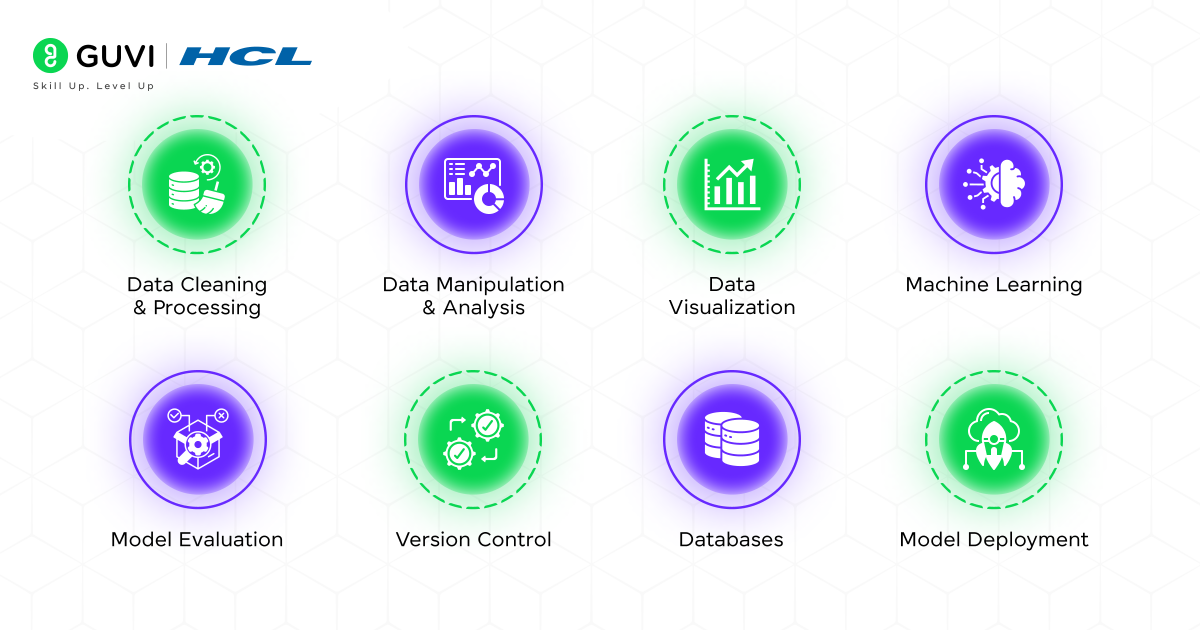
Now, let’s look into the data science tools and libraries used in the data science field. Learning these tools and libraries will take you a step closer to being a data scientist.
- Data Cleaning and Processing: Nltk, SpaCy in Python.
- Data Manipulation and Analysis: Pandas, NumPy in Python language.
- Data Visualization: Matplotlib, Seaborn, Plotly in Python and tools like Tableau and Power BI.
- Machine Learning: Scikit-learn, Tensorflow, Keras in Python.
- Model Evaluation: GridSearchCV, RandomizedSearchCV in Python.
- Version Control: Git and GitHub.
- Databases: SQL and NoSQL.
- Model Deployment: Flask and FastAPI in Python.
- Work on Hands-on Projects
After learning the necessary skills and libraries required for data science, the next stage is to work on hands-on projects. Select a real-world problem, gather a dataset and work on the project to provide a meaningful solution using the skills and techniques you learned. This is the best way to put your skills into practice. These projects are different from other normal projects.
You have to follow certain steps i.e., data collection, data cleaning, exploratory data analysis, model building, model evaluation and deployment to provide an error-free solution.
Guvi provides a course on Data Science with R one of the best courses for learning data science from beginner level to expert level. This course provides globally recognized industry certifications and gamified learning. Start your career in data science by enrolling in this course!
- Do Case Study (Optional)
The next step is to do case studies. Case studies are very important in data science. They provide a practical way to learn how data science techniques are applied in real-world scenarios, allowing students and professionals to understand the complexities of a problem, the steps involved in solving it, and the potential pitfalls to avoid, essentially bridging the gap between theoretical knowledge and practical application.
Best Way To Learn Data Science
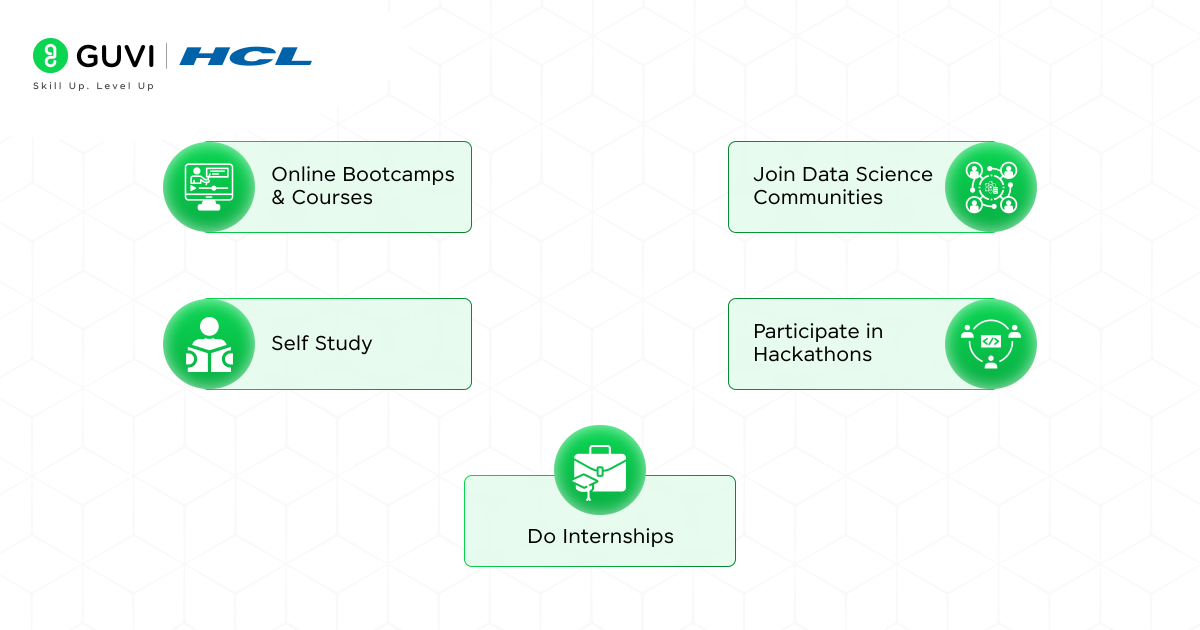
We have already seen the required skills for data science. In this section, we will look into the best ways to learn data science. Let’s dive into it!
Online Bootcamps and Courses
The most popular and fastest way to learn data science is through online courses and bootcamps. There are various data science courses on the internet, from paid to free courses. People choose this way of learning because it provides all the necessary knowledge for a data science role in the same course and this saves them the time for searching the resources separately.
If you want to learn the necessary skills required for data science starting from scratch to advance in a single course from India’s top Industry Instructors, consider enrolling in GUVI’s Zen class course Become a Data Science Course with IIT-M Pravartak that not only teaches you everything about data science, but also provides you with hands-on project experience and industry-grade certificate!
Self Study
The next way to learn data science is to self-study it. With the help of self-paced resources, books related to data science will help you achieve your career in data science. This process may take a while to learn and grasp the concepts which may be new to you. But gradually, you will pace yourself. For a beginner, you should consider learning from very basic concepts like what data science is and how it impacts the world.
Some of the popular data science books are “Python Data Science Handbook” and “Introduction to Machine Learning with Python”
Join Data Science Communities
The next way to learn data science is by joining communities. This may be a study group in your area or a discord channel. This is the interactive way of learning data science, you will find many people with similar interests and technical levels with you. You can group with them to learn and share your knowledge with other people. In this way, you will learn more new things.
Some of the communities are Women in data science and AWS AI/ML scholarships.
Participate in Hackathons
The most efficient way to learn data science is to participate in hackathons and try to provide solutions to real-world problems. This way you will gain more knowledge and experience in building projects on time. Participating in hackathons will teach you a lot more than you expect.
Some of the top hackathons are Amazon ML School and Kaggle Competitions.
Do Internships
This is an advanced way of learning data science. Once you’re confident in your problem-solving skills and building projects. You can start seeking internship opportunities. Internships will provide you with mentorships and work with data science experts who will guide you. Through this, you will gain experience in solving real-world problems and you will get to know how it is impacting.
Wrap Up
And, that’s all! There is no best and worst way to learn data science. The most important thing is how you are grasping the concept and how comfortable you are with your learning methodology. There is no one cap that fits all! The above-mentioned ways are the most popular and proven methods but the key point is finding a path that works for you. Whether you prefer boot camps, self-study, hackathons or community studying, the crucial thing is to stay consistent and keep moving forward!
FAQs
The best way to start learning data science is by gaining a strong foundation in mathematics, programming, and statistics. Familiarize yourself with Python or R, and then explore libraries like NumPy, Pandas, and Scikit-learn for data manipulation and machine learning.
While a background in computer science can be beneficial, it is not a strict requirement. Many successful data scientists come from diverse educational backgrounds, including mathematics, engineering, and social sciences.
Apart from technical skills, data scientists need strong problem-solving abilities, critical thinking, and effective communication. Domain knowledge and the ability to work in cross-functional teams are also valuable assets.
Yes, you can learn data science without a formal degree. There are plenty of self-paced online resources, boot camps, and courses that cater to individuals without a formal background in data science.
Data science offers promising career prospects with high demand across various industries. Data scientists are sought after for their ability to derive valuable insights and aid in data-driven decision-making, making it a lucrative and fulfilling career path.

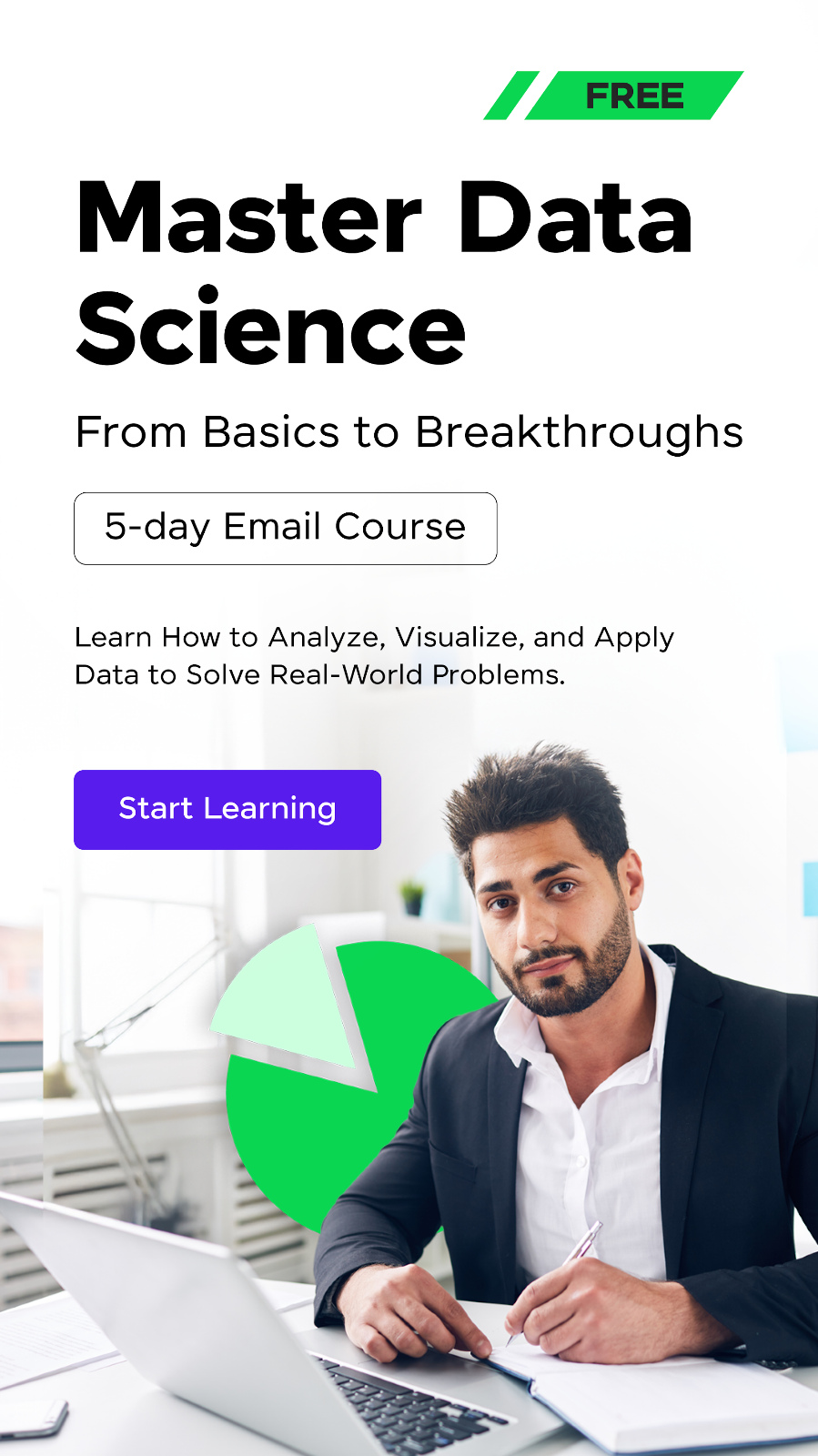
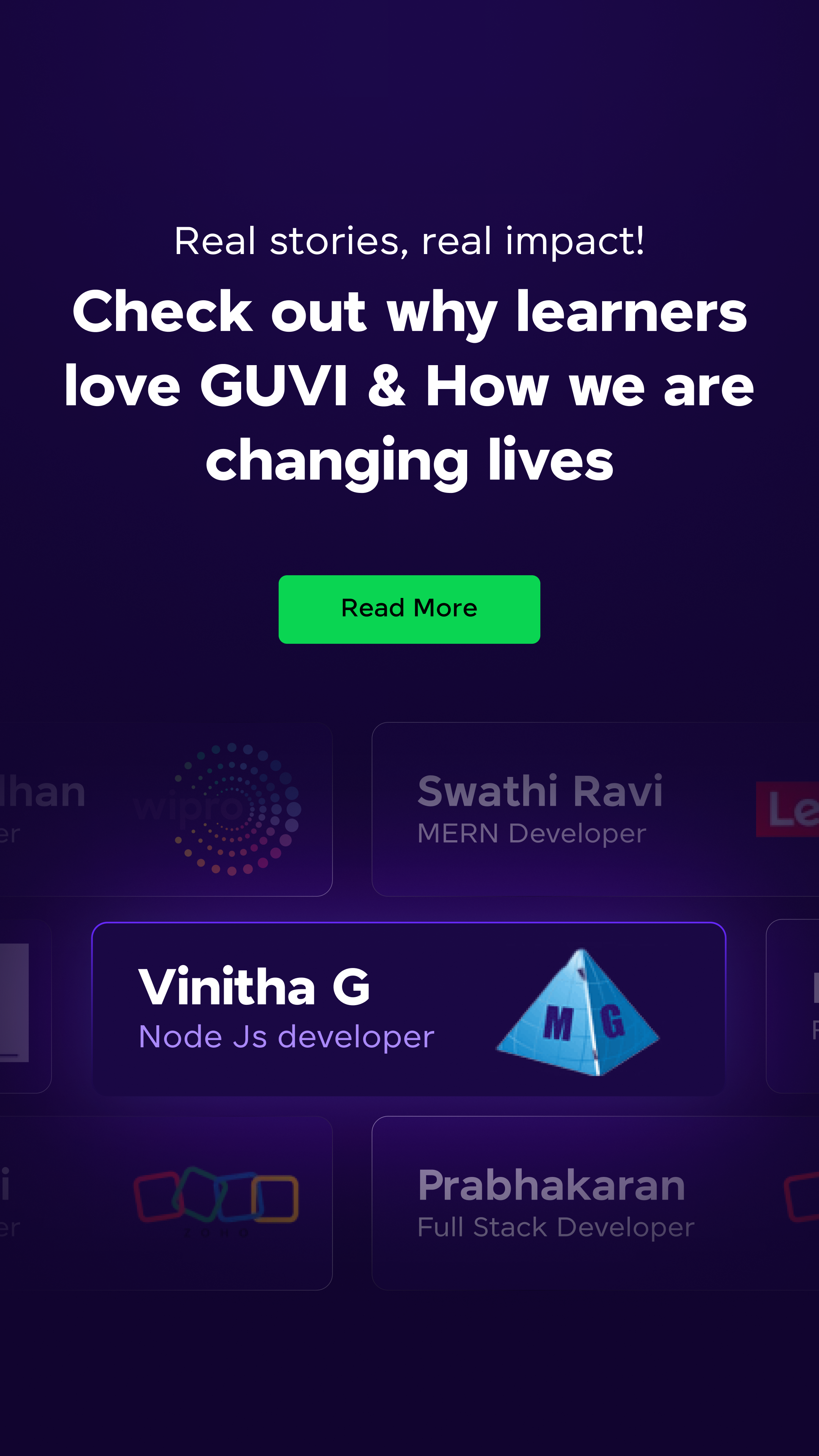















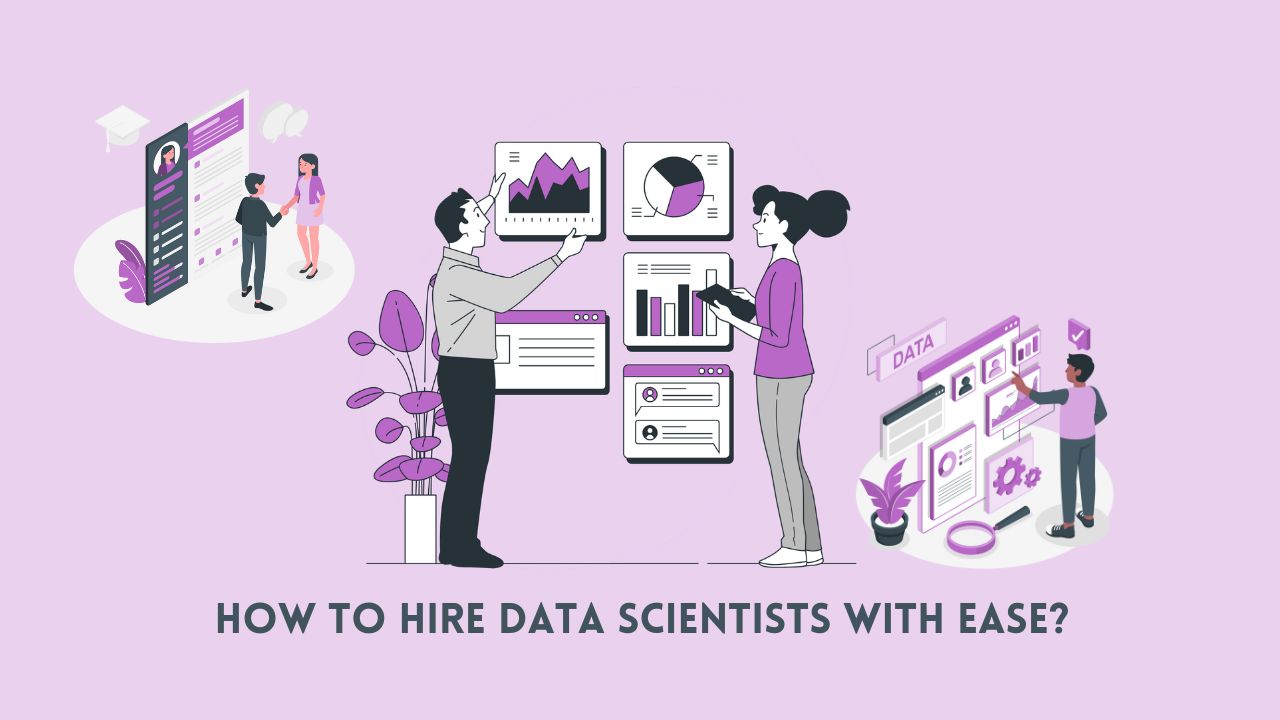
![10 Impressive Data Visualization Project Ideas [With Source Code] 8 Data Visualization Project Ideas](https://www.guvi.in/blog/wp-content/uploads/2024/11/best_data_visualization_project_ideas_with_source_code_.webp)


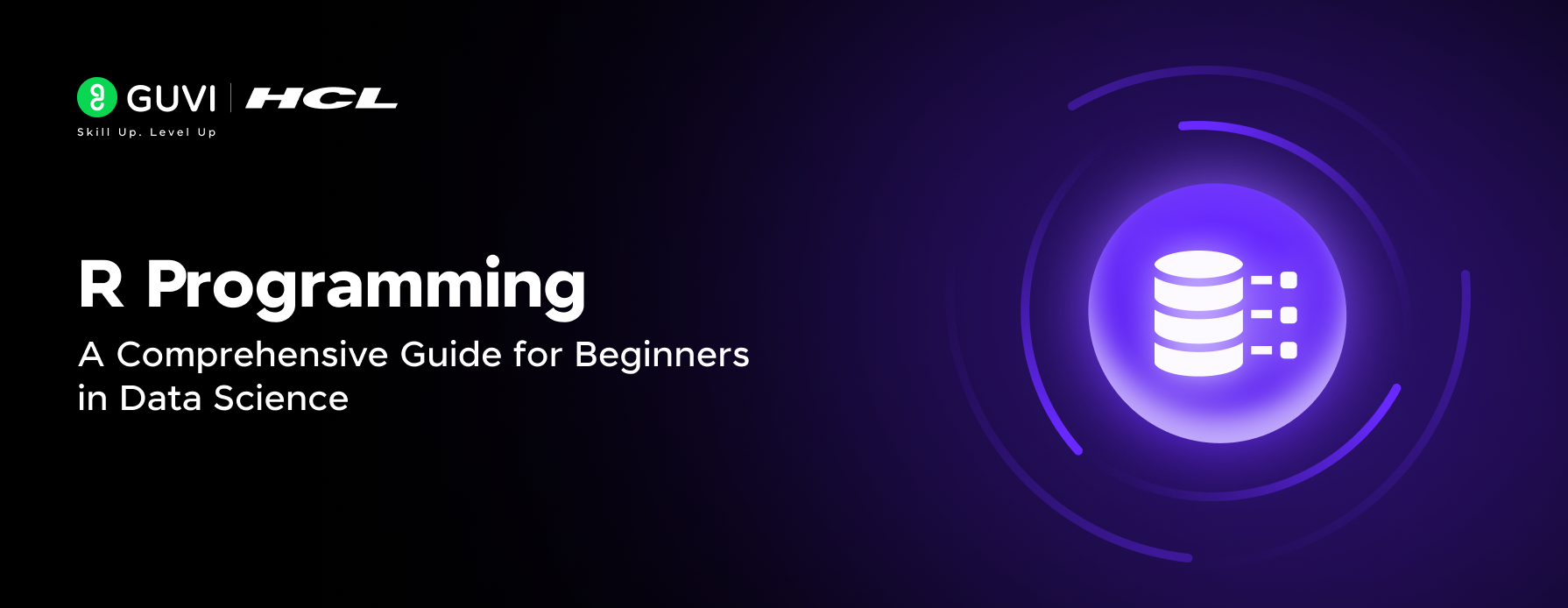


Did you enjoy this article?